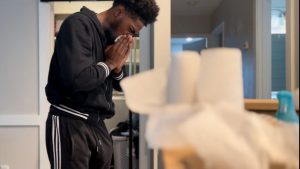
Deja Davis
Editor-in-Chief
The last week of October has quickly approached and I know some people are getting their last minute costumes together while making their Halloween night party plans, but it is also a very important month for women, as well as men.
October is the month where we raise awareness for those that are currently fighting, have lost, or survived their battle with breast cancer.
This month also reminds women and men, if not already, to begin to get tested monthly and start the routine of self-exams regularly.
Breast cancer happens when cells in the breast begin to grow and multiply abnormally. Even changes in DNA can cause normal breast cells to become abnormal.
This year, an estimated 276,480 new cases of invasive breast cancer are expected to be diagnosed in women in the U.S., along with 48,530 new cases of non-invasive breast cancer.
Most breast cancers are found in women who are 50 and older, but breast cancer also affects younger women, according to the Centers of Disease Control (CDC).
Personally, this topic has always made me feel overly paranoid because each time I felt a slight pain, I began to Google search articles and begin to panic.
I have read that breast cancer is not common within our age group and the type of breast pain that we start to feel early is non-cancerous; usually related to hormonal changes in our bodies.
Therefore yes, it is rare to contract as of now, but it is also important to keep in mind that this disease becomes more common as we age.
Being aware of your body is crucial more than ever when dealing with any type of cancer, so do not disregard the changes in your body just because you are young.
It is never too early to start being consistent with researching, getting to know your body, and really paying attention to the signs your body gives.
Taking these steps is key to detecting the cancer in its earliest stages: feeling and looking for changes surrounding the breast, such as dimpling, pain discomfort, redness, lumps, and nipple discharge.
Understanding the statistics, as well as your personal risk factors, can help with early diagnosis and treatment.
Some of the most common risk factors include the following: having a close family member (mother, sister, or aunt) who was diagnosed with breast cancer before age 50, Inherited changes (mutations) to certain genes such as BRCA1 and BRCA2, starting birth control contraceptives, and having received radiation treatment to the chest or breast before age 30 just to name a few.
I now challenge you, your friends, and even myself to start getting in the process of checking and being more aware of breast cancer.
There are a lot of fears and barriers that come along, but remember it is better to be safe now than realizing when it is too late.
Continue to spread awareness!




Be First to Comment